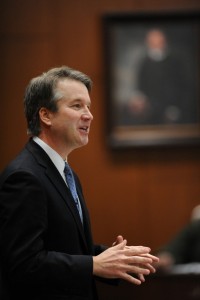ACLU Attorney Says Tighter Voting Rules “Not Healthy” for Democracy
There was a sea change in the approach to election issues across America in the late 2000s, as Dale Ho sees it. He isn’t sure what the cause was, but he is sure it wasn’t a good development. Ho is director of the American Civil Liberties Union Voting Rights Project, which makes him one of the leaders of legal opposition nationwide to tightening the rules on who can vote.
Ho told an “On the Issues with Mike Gousha” session at Eckstein Hall on Wednesday that voting rights issues had largely drawn bipartisan support for decades.
“We had thought we had largely achieved a consensus in this country around universal suffrage, basic access for everyone (to voting),” Ho said. “Most of the debates about voting rights since the early 1970s were about redistricting – are the lines being drawn fairly for every community, are they being gerrymandered for partisan reasons, things like that. The trend remained toward greater liberalization in terms of ballot access. We didn’t see a lot of fights about registration and ballot access. . . .
“In the late 2000s, something changed.”

